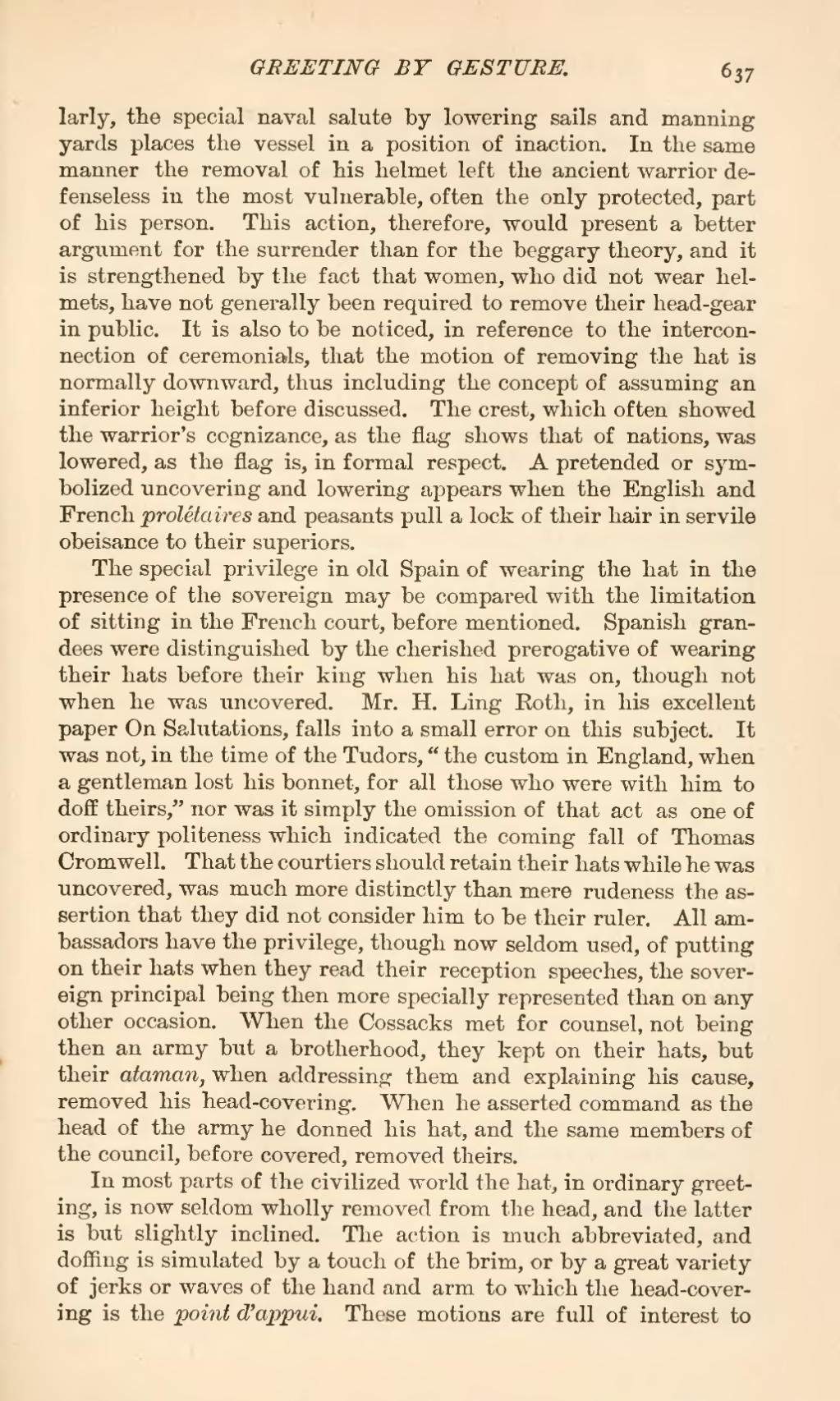larly, the special naval salute by lowering sails and manning yards places the vessel in a position of inaction. In the same manner the removal of his helmet left the ancient warrior defenseless in the most vulnerable, often the only protected, part of his person. This action, therefore, would present a better argument for the surrender than for the beggary theory, and it is strengthened by the fact that women, who did not wear helmets, have not generally been required to remove their head-gear in public. It is also to be noticed, in reference to the interconnection of ceremonials, that the motion of removing the hat is normally downward, thus including the concept of assuming an inferior height before discussed. The crest, which often showed the warrior's cognizance, as the flag shows that of nations, was lowered, as the flag is, in formal respect. A pretended or symbolized uncovering and lowering appears when the English and French prolétaires and peasants pull a lock of their hair in servile obeisance to their superiors.
The special privilege in old Spain of wearing the hat in the presence of the sovereign may be compared with the limitation of sitting in the French court, before mentioned. Spanish grandees were distinguished by the cherished prerogative of wearing their hats before their king when his hat was on, though not when he was uncovered. Mr. H. Ling Roth, in his excellent paper On Salutations, falls into a small error on this subject. It was not, in the time of the Tudors, "the custom in England, when a gentleman lost his bonnet, for all those who were with him to doff theirs," nor was it simply the omission of that act as one of ordinary politeness which indicated the coming fall of Thomas Cromwell. That the courtiers should retain their hats while he was uncovered, was much more distinctly than mere rudeness the assertion that they did not consider him to be their ruler. All ambassadors have the privilege, though now seldom used, of putting on their hats when they read their reception speeches, the sovereign principal being then more specially represented than on any other occasion. When the Cossacks met for counsel, not being then an army but a brotherhood, they kept on their hats, but their ataman, when addressing them and explaining his cause, removed his head-covering. When he asserted command as the head of the army he donned his hat, and the same members of the council, before covered, removed theirs.
In most parts of the civilized world the hat, in ordinary greeting, is now seldom wholly removed from the head, and the latter is but slightly inclined. The action is much abbreviated, and doffing is simulated by a touch of the brim, or by a great variety of jerks or waves of the hand and arm to which the head-covering is the point d'appui. These motions are full of interest to
